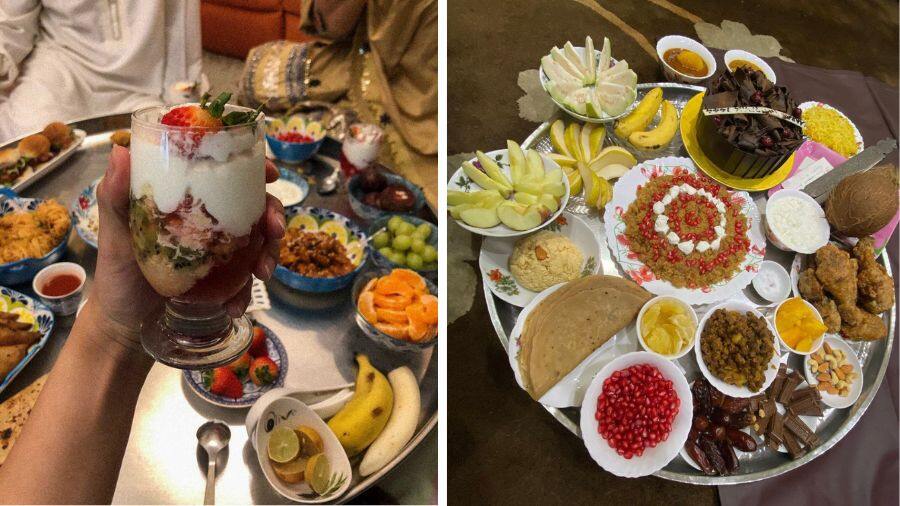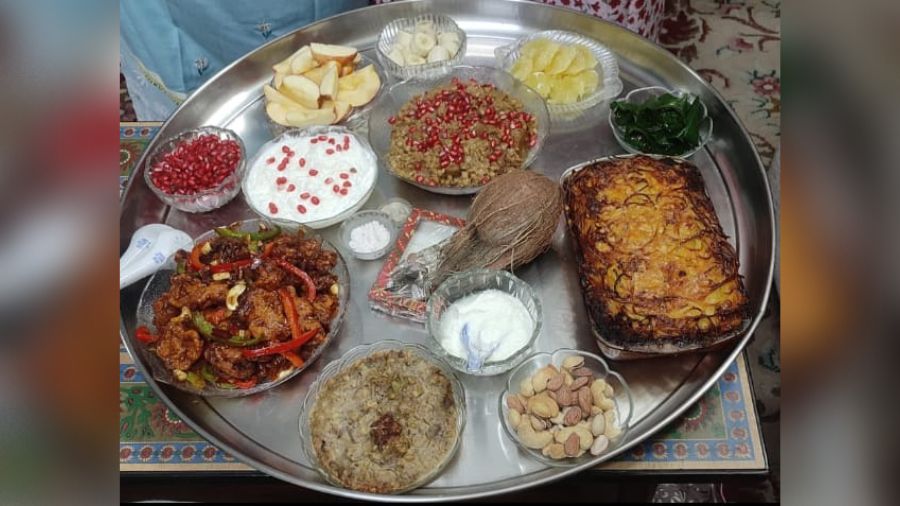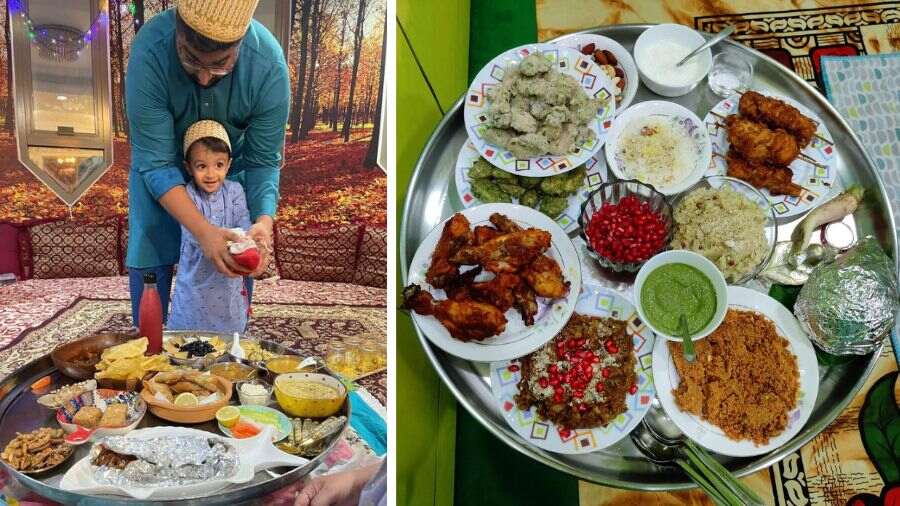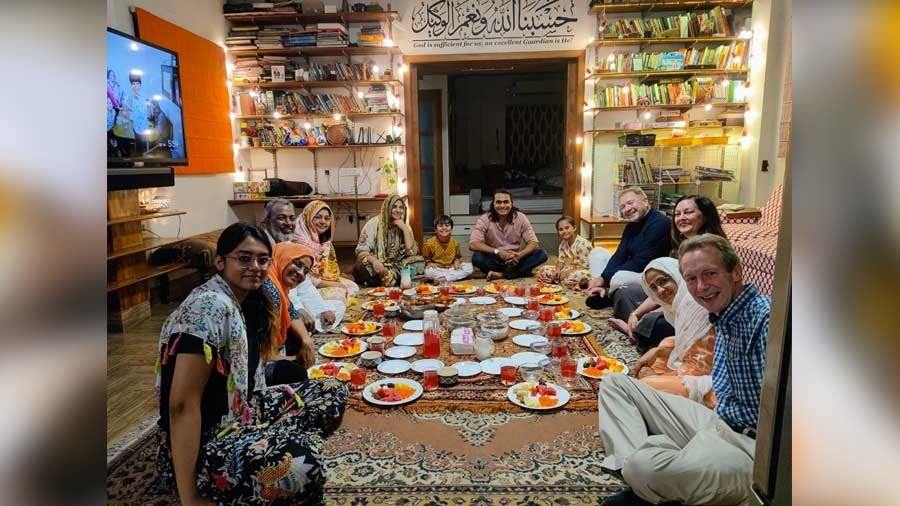As a Dawoodi Bohra, our new year is not celebrated as in ‘celebrated’.
It comes within a day of martyr Husain’s fateful arrival in Karbala, which is a signal for our Shiite community to go into mourning.
However, in the fleeting space of the day between the ‘clock strikes 12’ and for all festivities to be put away, Bohris get ample time to squeeze in two commemorative responses: send hazaar impersonal ‘Navu waras mubarak’ WhatsApps to everyone they do or don’t know (an alternative version that has been doing the rounds for the last couple of years is begging people for forgiveness for all things said, implied or unsaid) and starting the first night of the new year with… a feast.
That’s right, a feast.
We call it Pehli Raat (The first night). So go anywhere across the world, encounter a Bohri, whisper the words ‘Pehli raat’ and it may evoke a reaction similar to what the words otherwise evoke in rural India: wide eyes, sweat, salivation, ‘more!’ and hard breathing — with different implications.
'Mithaas' and 'Kharaas' in perpetual sequence
Among Bohris, a feast is not a few dishes hurriedly put together: that any fool can do.
It is a tradition of sub-meals sequentially designed so that the sweet (mithaas) alternates the non-sweet (kharaas) in a perpetual sequence before climaxing with the staple core of the meal — the rice — as item 18.
It is a tradition where all the menu components are placed inside the thaal (a traditional large metal tray) and then the eldest takes a nariyal or daab (preferably wrapped in silver foil paper) to ‘wadhaaoe’ (circumambulate the thaal as they usually would somebody’s forehead on her birthday to protect her from the evil eye).

Among Bohris, a feast is a tradition of sub-meals sequentially designed so that the sweet ('mithaas') alternates the non-sweet ('kharaas') in a perpetual sequence before climaxing with the staple core of the meal — the rice Courtesy Mudar Patherya
It is a tradition to sit on the floor with the legs on the right side (the cross-legged padma-aasan types receive a teerchhi glance with a morse of “Didn’t they teach how to give hurmat to a thaal?”).
It is a tradition for the youngest on the thaal to place a glass crucible containing salt (‘nimakdaani’) on the palm of the right hand facing upwards while the left palm is respectfully placed facing upwards under the right for adab and offer each one on the thaal to touch the salt and place it on their tongue, signalling the ceremonial beginning of the feast.
It is a tradition for each one to turn to look at the other and invite that person to take the first ‘nivaala’ as a sign of respect (“Pehla aap shuru karo ni”).
It is a tradition to eat with four fingers of the right hand (small finger was a spectator but is now ingeniously used to tap smartphone buttons and receive mid-meal calls).
It is a tradition to wet fingers no higher than half the distance between nail and knuckle. Anybody washing the palm after dinner is treated with a look of social dismissal.
It is a tradition to have different meats on the thaal (fish, mutton and chicken).
It is a tradition to place some arm-manoeuvring space for the person at one’s left and enquire “Tamaaro haath aavey chhey ne? (Are you comfortable moving your hand?)”
It is a tradition to place a silver coin with the names of the ‘panjatan’ (Mohammed, Ali, Fatema, Hasan and Husain) on the thaal for barakat.
Tradition across continents

A festive 'thaal' from the residence of Khozaima Calcuttawala Courtesy Mudar Patherya
For years, the Pehli Raat dinner was a functional chore in India, servicing two or three family members (I can hear my wife complain “O baba, how will we even get to 14 items on the thaal?” and then cheating to put sauce in a piyaali and passing it off as a menu item).
In California, where I am writing this from, the Pehli Raat was fascinatingly different.
It was a 30-year tradition among 30-year immigrants.
It wasn’t an event to share a meal; it was an opportunity for friends to aggregate from as far as 70 kilometres away to keep a flame alive.
The host sent a couple of hangers-on (me and daughter) to wait for guests on the street and bring their foil-wrapped food trays in; around 25 guests scattered across three thaals; every single invitee introduced themselves (an education for my introverted hiding-in-the-corner self); you either knew people you were introduced to or you knew people back home that they were related to (one told me “My grandfather lived on Prinsep Street” which, by the way, was 135m from where I grew up, after which our engagement graduated to a ‘known-you-for-years’ level); people of all ages discussed a range of subjects across the thaal (residential rent arbitrage opportunities in San Francisco won hands down); most ladies wore salwar-kameez but the one who wore ghaghra-odhna with a pearl-encrusted bracelet on her left arm was easily the winner; the customary “sagla jamjo” (Please eat well) line came from the host when we were well past item nine; the 21 dishes on the menu were tracked on WhatsApp (“Keep your stomachs free for the next meat item”); the only time I saw a “commotion” was when a guest insisted on managing the kitchen and the host kept asking her to sit on the thaal (“Tamey beso ni” was exchanged 13 times in 32 seconds); the Arabian khaajla barfi (item 16) had been “imported” from India; guests picked the 9kg thaal and washed it collectively in the garden; the ‘meal’ did not technically end with the thaal being carried away to the hosepipe but only after everyone had sat around eating double-layered pistachios, chooran (would you believe) and paan (with so much silver waraq that there was no visible green).
The hostess complained over WhatsApp at 1.15am that it was no longer as good as in the past. “We used to do 35 items in the past; we do only 21 today. I think we are losing it as a community.”


